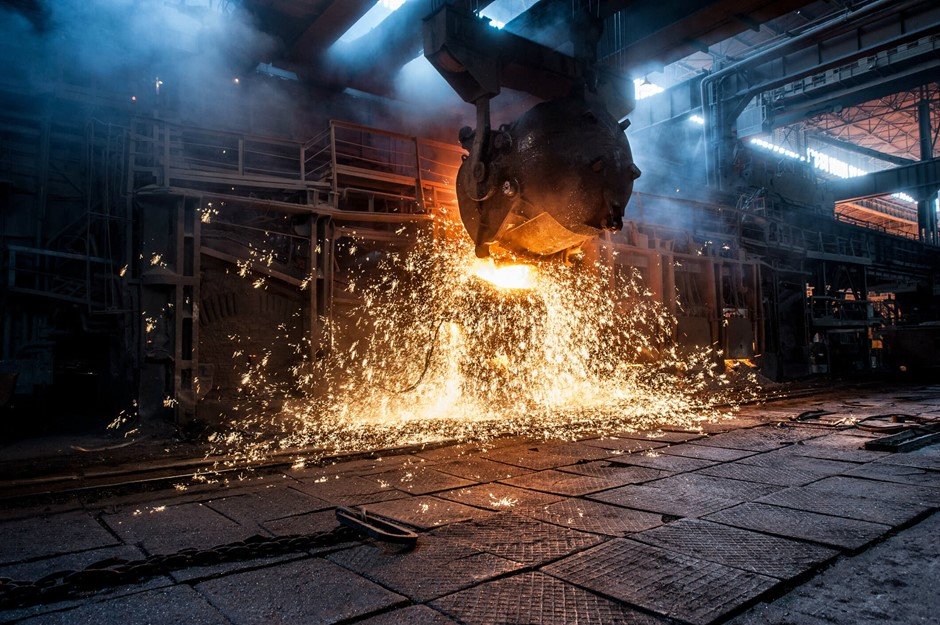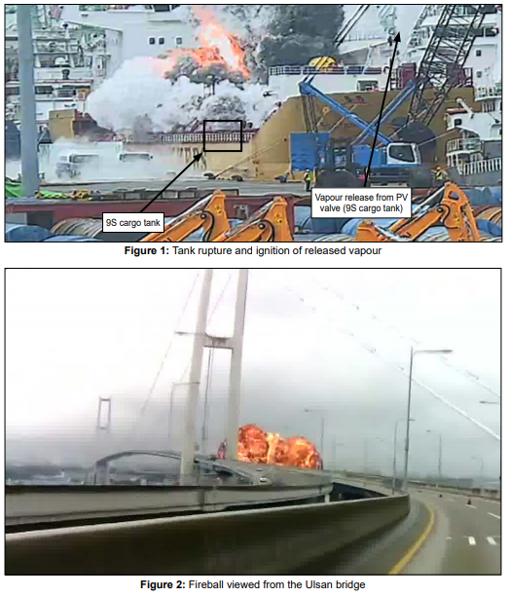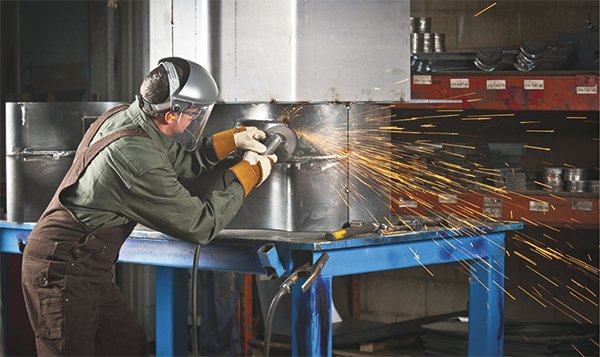Hot work is common in a variety of industries and workplaces, but it can also be extremely dangerous. It’s important that workers understand the risks that come with this kind of work – and how to manage them.

Understanding Hot Work
Hot work is work that involves materials with high temperatures. It includes job tasks that involve potential contact with:
- Open flames (cutting, welding, burning operations)
- Electrical friction or impact sparks from air gouging, riveting, drilling, grinding or chipping
- Sparks from the discharge of static electricity
- Hot surfaces like engine manifolds and exhaust systems, brakes, bearings, welding or cutting torches, coils, and resistors
- Heated gases
- Internal combustion engines
The National Fire Protection Association’s (NFPA) definition takes it a step further and includes flame-producing activities, spark-producing activities, and heat production, either through conduction or radiation/convection.
Accidents involving hot work occur in various industries across the United States, including, but not limited to:
- Food processing
- Pulp and paper manufacturing
- Oil production
- Fuel storage
- Waste treatment
- Construction
The NFPA notes that most accidents occur due to the ignition of combustible materials, structures, or debris near the hot work activity. Incidents have risen sharply in the past two decades, highlighting the importance of workers understanding a) when they are facing hazards and b) how to take appropriate action to mitigate the risks.
Hot Work Hazards
Working with heat and heat-generating materials poses several key threats to workers. By identifying and understanding the hazards, workers can make informed decisions that will keep them safe on the job.
Let’s look at a few of the most common hot work hazards.
Fire
Fire is the most obvious and one of the most significant risks accompanying this type of work. Statistics show that hot work is one of the leading causes of industrial fires across all industries – consistently making it into the top five.
Even if you’re not working with an open flame, the risk is still there. Sparks and molten material can hit temperatures greater than 1,000°F and scatter more than 35 feet during welding, cutting, and grinding. And when they come into contact with the paper, wood, flammable liquids, and vapors, ignition can be nearly instantaneous.
Burns
It goes without saying that working with hot materials and high temperatures comes with the risk of burns – and not just from sparks and fire. OSHA notes that workers can also suffer burns as the result of an accumulation of flammable gases.
Explosion
Conducting heat- and spark-producing activities near combustible materials is a huge explosion risk. Doing hot work on containers like drums, tanks, and pipes that have not been properly decontaminated can also cause serious incidents.
Best Practices for Working with Heat
Both the NFPA and the CSB emphasize a critical first step before beginning hot work: asking “is this work necessary?” If it isn’t, seek alternatives.
But often, the work is unavoidable. In these cases, following some best practices can help keep you safe while working with heat.
1. Keep a Safe Distance from Flammable Materials
Maintain a safe distance between the hot work and anything combustible or ignitable. Most companies require a minimum of 20 to 35 feet, and some require as much as 50 feet of separation from flammable liquids.
If some fire hazards can’t be moved, reduce the risks by using guards to confine the heat, sparks, and slag.
2. Use a Gas Meter
If gas vapors might be present, it’s a good idea to use a flammable gas meter. This will tell you whether there are vapors and, if so, their concentration. If the meter reads anything other than zero, workers should not begin any hot work.
OSHA recommends monitoring the hot work area with a gas detector while activities are ongoing. Workers should stop working immediately if a flammable or combustible gas exceeds 10 percent of its lower explosive limit.
3. Wear Appropriate PPE
Donning protective work gear should be second nature to most workers, but it bears repeating. Protective eyewear (or facemasks, for some applications) can help protect against sparks, while gloves can mitigate the risk of burns from hot materials.
PPE is only effective if it’s used properly, so it’s important to select the right gloves for the job. You’ll need to know what temperature the gloves must hold up against and what level of dexterity the work requires. Consider the following as a starting point:
- Leather gloves should be used when welding as they can resist sparks and moderate heat
- Aluminized gloves are recommended for welding, furnace, and foundry work due to their reflective and insulating protection
- Kevlar gloves have a wide variety of industrial applications; cut- and abrasion-resistant, they protect against both heat and cold and perform well in situations requiring flame resistance
All protective clothing and aprons should be fire and flame resistant to guard against sparks, heat, burns, and radiation. Leather and wool are good choices, while flammable fabrics like cotton and linen should be avoided.
4. Ensure Safety Equipment Is in Good Working Order
Safety equipment should be present and in good working order if hot work is even being considered. Start by asking yourself these questions:
- Does the facility have fire sprinklers? Are they in service?
- Are there fire extinguishers throughout the work area?
- Are the fire extinguishers the correct type for the hazards present?
- Are first aid kits stocked and easily accessible? Do they include burn treatment?
5. Have a Fire Watchman in Place
In some industries, such as welding, having a safety guard is mandatory. The fire watch should understand the inherent hazards of the worksite and the work being carried out and is responsible for ensuring safe conditions during hot work activities.
According to OSHA, the person assigned to this task should:
- Have fire-extinguishing equipment readily available and be trained in its use
- Be familiar with facilities so they can quickly sound an alarm in the event of a fire
- Watch for fires in all exposed areas; try to extinguish any fires or sound the alarm
- Maintain the fire watch at least 30 mins after welding or cutting operations are completed (to detect and extinguish possible smoldering fires)
6. Train Workers Thoroughly
It’s essential that employers provide comprehensive training to all employees engaging in hot work. Training should include:
- Hot work policies and procedures
- Proper use and calibration of gas meters
- Location and use of safety equipment
- Job-specific hazards and controls
Developing a Hot Work Safety Program
Businesses that engage in hot work should have some type of safety program in place to control or eliminate hazards and their risks. Whether you already have a program or intend to develop one, here are some general guidelines to help get you started:
- Policies
- Where hot work is permitted
- When hot work is permitted
- Who authorizes, performs, and monitors hot work activities
- Procedures
- What to assess before performing hot work
- How to prepare an area for hot work
- What to do if hot work is necessary in a particularly hazardous area
- What tools and PPE are required to carry out hot work
- When a hot work permit is required and how to obtain one
- Training
- Roles of employees, supervisors, maintenance personnel, fire watchmen, and contractors
- Communication
- Posting policies and procedures for easy viewing
- Posting signs in areas where hot work cannot be performed
( Find out: templates hot-work safety-program
Conclusion
Working with high temperatures is sometimes unavoidable, but that doesn’t mean it has to be dangerous. By following policies and procedures and industry best practices, you can ensure the hot work gets done properly and safely.



